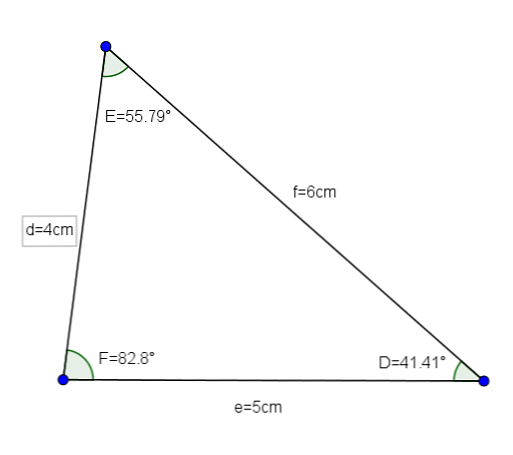The triangles are those whose three internal angles are acute angles; that is, the measurement of each of these angles is less than 90 degrees. Having no right angle, we have that the Pythagorean theorem was not met for this geometric figure.
Therefore, if we want to have some type of information on one side or angle, we need to use another theorem that allows us to have access to that data. What we can use is the sine theorem and the cosine theorem.

Index
- 1 Characteristics
- 1.1 Sine theorem
- 1.2 The cosine theorem
- 2 types
- 2.1 Equilateral triangles
- 2.2 Acute isosceles triangle
- 2.3 Triangular scaly triangle
- 3 Resolution of acute triangle
- 3.1 Example 1
- 3.2 Example 2
Feature
Among the characteristics of these geometric figures, we can highlight the characteristics given by simple facts as triangles. Among these we must:
– Triangles are polygons that have three sides and three angles.
– The sum of the three internal angles is equal to 180 °.
– The sum of the two sides is always greater than the third.
For example, let’s look at the following triangle ABC. In general we identify their sides with lowercase letters and their angles with uppercase letters, so that one side and the opposite corner have the same letter.
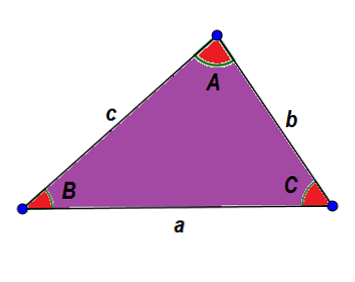
For the characteristics that have been given, we know that:
A + B + C = 180 °
a + b> c, a + c> b and b + c> a
The main characteristic that distinguishes this type of triangle from the others is that, as already stated, its internal angle is acute; that is, the measurement of each angle is less than 90 °.
The acutángulos triangle, together with the obtusángulos triangle (one of which has a size of more than 90 °), is part of the set of angled angled triangles. This set consists of triangles that are not rectangles.
When forming an oblique triangle, we must solve a problem involving an acute triangle. We must use the sine theorem and the cosine theorem.
Sine theorem
The breast theorem states that the ratio of one side to the opposite sine angle is equal to twice the radius of the circle formed by the three vertices of the triangle. It is:
2r = a / sin (A) = b / sin (B) = c / sin (C)
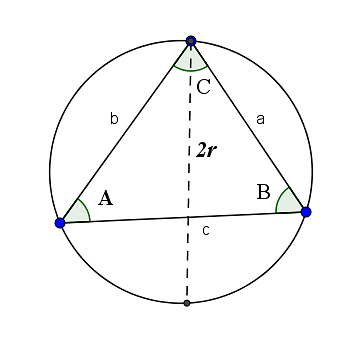
The cosine theorem
On the other hand, the cosine theorem gives us three equations for each ABC triangle:
a 2 = b 2 + c 2 -2bc * cos (A)
b 2 = a 2 + c 2 -2ac * cos (B)
c 2 = a 2 + b 2 -2t * cos (C)
This theorem is also known as sine law and cosine law.
Another characteristic we can give from the acutángulos triangle is that two of them are the same if they meet one of the following criteria:
– If they have the same three sides.
– If they have one side and two angles that are equal to each other.
– If they have two sides and the same angle.
Type
We can classify them with triangles based on their sides. This can be:
Equilateral triangle
They are triangular acutángulos which have all the same sides and, therefore, all internal angles have the same value, that is A = B = C = 60 degrees.
For example, let’s take the following triangle, whose sides a, b and c have a value of 4.

Acute isosceles triangle
This triangle, besides having an acute internal angle, has the characteristics of having the same two sides and the third, which is generally considered a base, different ..
An example of this type of triangle can be one whose base is 3 and the other two sides have a value of 5. With this size it will have an opposite angle to the same side with a value of 72.55 ° and the opposite angle from the base will be 34.9 °.
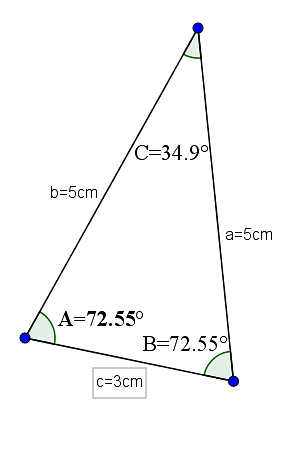
Acutángulos triangle scale
This is a triangle that has different sides, two to two. Therefore, all angles, other than less than 90 °, differ from two to two.
The DEF Triangle (whose measurements are d = 4, e = 5 and f = 6 and the angle is D = 41.41 °, E = 55.79 ° and F = 82.8 °) is a good example of an acute halal triangle.
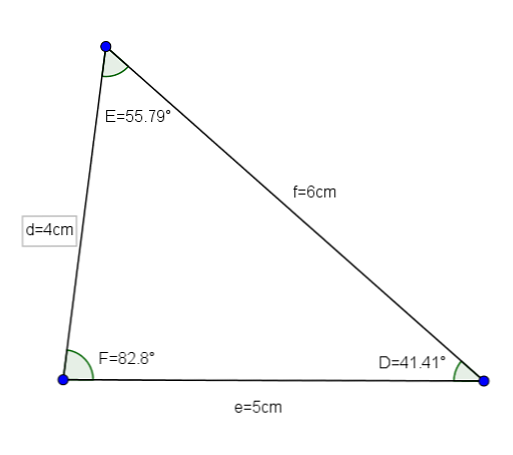
Acute triangle resolution
As we said before, for solving problems involving acute triangles, the use of the sine and cosine theorems is needed.
Example 1
Given an triangle ABC with angle A = 30 °, B = 70 ° and side a = 5 cm, we want to know the value of angle C and sides b and c.
The first thing we do is to use the fact that the number of internal angles of a triangle is 180 °, to get the value of angle C.
180 ° = A + B + C = 30 ° + 70 ° + C = 100 ° + C
We delete C and leave:
C = 180 ° – 100 ° = 80 °
As we already know three angles and one side, we can use the sine theorem to determine the value of the remaining side. With theorems we must:
a / sin (A) = b / sin (B) and a / sin (A) = c / (sin (C)
We remove b from the equation and we must:
b = (a * sin (B)) / sin (A) ≈ (5 * 0.940) / (0.5) ≈ 9.4
Now we only need to calculate the value of c. We proceed analogously as in the previous case:
c = (a * sin (C)) / sin (A) ≈ (5 * 0.984) / (0.5) ≈ 9.84
Thus we obtain all triangle data. As we can see, this triangle is included in the unequal scale triangle category.

Example 2
Given a triangle of DEF with sides d = 4cm, e = 5cm and f = 6cm, we want to know the angular value of the triangle.
For this case we will use the cosine law, which tells us that:
d 2 = e 2 + f 2 – 2efcos (D)
From this equation we can delete cos (D), which gives us the result:
Cos (D) = ((4) 2 – (5) 2 – (6) 2 ) / (- 2 * 5 * 6) = 0.75
From here we have D≈ 41.41 °
Now using the senom theorem we have the following equation:
d / (sin (D) = e / (sin (E)
To cleanse sin (E), we must:
sin (E) = e * sin (D) / d = (5 * 0.66) / 4 ≈ 0.827
From here we have E≈55.79 °
Finally, using the sum of the internal angles of the triangle is 180 °, we have F≈82.8 °.
